Malware in Crypto Transactions
Note: This post may contain affiliate links, and we may earn a commission (with No additional cost for you) if you purchase via our link. See our disclosure for more info. The gold and crypto world is constantly changing. This is not financial, investment, legal, or professional advice. So, please verify the information on the gold and cryptocurrency provider’s websites.
Malware in crypto transactions is a nasty problem. It hides in apps and sneaks off with your money. Think botnets mining your resources or ransomware locking you out unless you cough up some crypto. And let's not forget about phishing scams and clipboard hijacking—real charmers. In 2022, a staggering $3.8 billion was stolen through cybercrime. As threats become slicker, vigilance is key. Want to know how to spot these dangers? Keep reading.
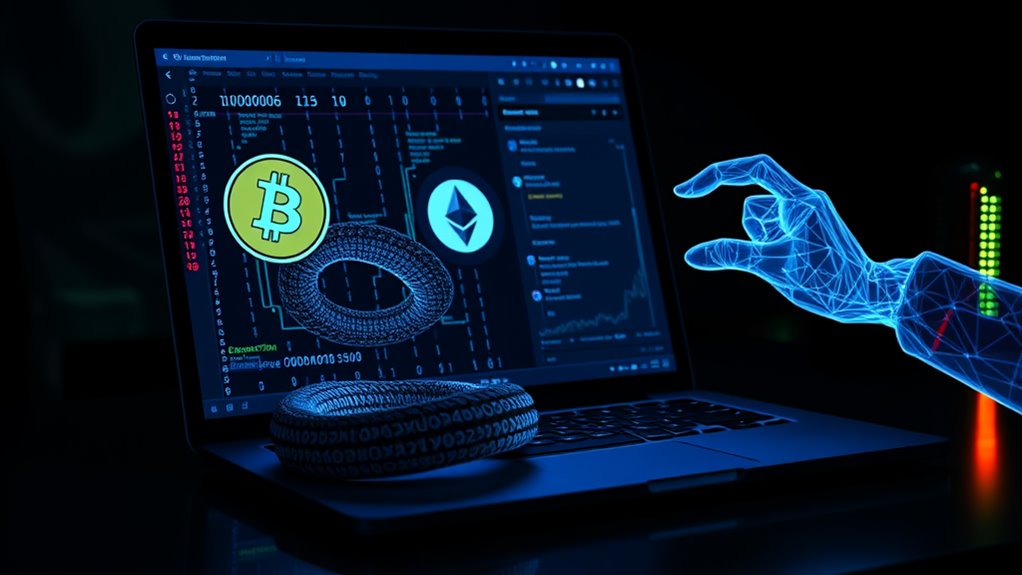
In the wild world of cryptocurrency, where fortunes can be made overnight or lost in a flash, there's a dark underbelly lurking beneath the shiny surface. Yes, folks, welcome to the domain of crypto malware. It's not just a buzzword; it's a real threat. Imagine this: a seemingly legitimate cryptocurrency app, but behind its friendly interface lies malicious code, ready to access your wallet like a thief in the night. Not cool.
In the crypto world, beware: behind shiny apps, malicious code lurks, ready to steal your fortune.
Botnets, those creepy networks of hijacked devices, are mining away while you sleep. And then there's cryptojacking, where your computer's resources are used without your consent to mine coins like Monero. You're paying the electricity bill, but someone else is cashing in. Cryptojacking utilizes device processing power for unauthorized mining without the user's knowledge, compounding the problem.
Ransomware? That's when hackers lock you out of your own files and demand a crypto ransom. Surprise! You're not even safe in your inbox, where phishing campaigns lurk like wolves in sheep's clothing.
Let's not forget how malware gathers data. It can scan your files for wallet info or even extract private keys directly from your RAM. That's right; it's like a digital pickpocket working at lightning speed. Browsers? They're not immune either. Saved passwords and form data are fair game.
And just when you think you're safe, bam! Clipboard hijacking swoops in, swapping your wallet address with one controlled by the hacker. Transactions are rerouted faster than you can say “blockchain.” It's a wild ride, but not the fun kind. With the rise of sophisticated threats like Lumma Stealer, these malicious tools are often distributed through phishing campaigns designed to look legitimate.
Worried about detection? Malware authors are clever. They've got stealth mechanisms and encryption to hide their dirty work. They'll even use domain generation algorithms to escape the long arm of the law. In fact, many use process injection to embed malware within legitimate processes, making it harder to detect.
In 2022 alone, cybercrime stole a staggering $3.8 billion in crypto. So, as you plunge into the crypto pool, remember: there's a good chance a shark is lurking beneath the surface.
Frequently Asked Questions
How Can I Tell if My Device Is Infected With Malware?
To spot malware, look for the obvious signs.
Is the device slower than molasses? Freezing up like it's on a winter break? Those are red flags.
Random pop-ups? Yep, that's malware trying to ruin your day.
Check for weird activity, like unexpected programs launching or your storage mysteriously vanishing.
And if your battery drains faster than a kid in a candy store? Time to raise an eyebrow.
Trust your gut; something's off.
What Are the Signs of a Crypto Wallet Being Compromised?
Signs of a compromised crypto wallet? Oh, they're not subtle.
Unexpected tokens popping up? Yeah, that's a red flag.
Large withdrawals without consent? Alarm bells should be ringing.
Private keys exposed? Oops!
And don't forget suspicious logins from weird IPs.
If funds vanish into thin air, it's a clear theft sign.
Last but not least, if you're approving transactions you didn't initiate, congratulations! You've been played.
Time to investigate.
Can Malware Affect My Hardware Wallet?
So, can malware mess with a hardware wallet? Absolutely. It's not just a theoretical nightmare.
Malicious firmware can slip in, stealing your private keys faster than you can say “cybersecurity breach.” Those sneaky attacks can alter transactions, too. You think your wallet's safe? Think again.
If your device isn't updated or from a shady vendor, you're basically inviting trouble. Malware loves lazy security. So, keep that in mind, folks!
Is It Safe to Use Public Wi-Fi for Crypto Transactions?
Using public Wi-Fi for crypto transactions? That's like handing your wallet to a pickpocket. Seriously, it's a risky move.
Unsecured networks are an open invitation for hackers. They can intercept your data faster than you can say “cryptocurrency.”
Rogue hotspots? They're everywhere, waiting to snare the unsuspecting. If you think you're safe, think again.
Stick to mobile data, folks. Trusting public Wi-Fi is like trusting a stranger with your life savings—don't do it.
How Often Should I Update My Security Software?
Updating security software? It's not a once-in-a-blue-moon thing. Daily or weekly updates are a must.
Why? Because threats pop up faster than you can say “hack.” Sure, automatic updates are great, but don't slack off on manual checks.
Rollback options are your safety net if updates go sideways.
And for crypto-related stuff? Well, those patches need to fly out the door as soon as they drop. No time to waste!

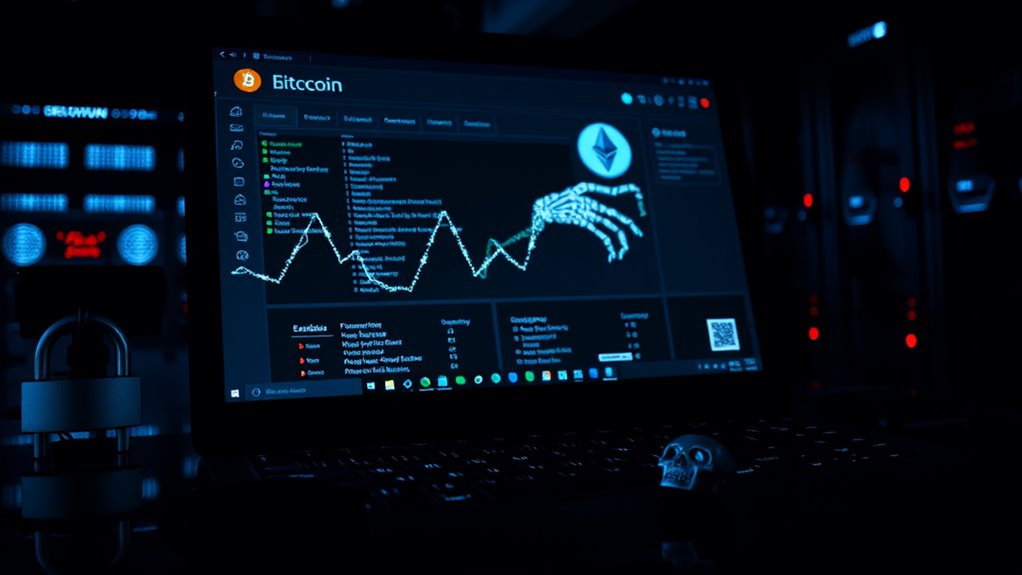






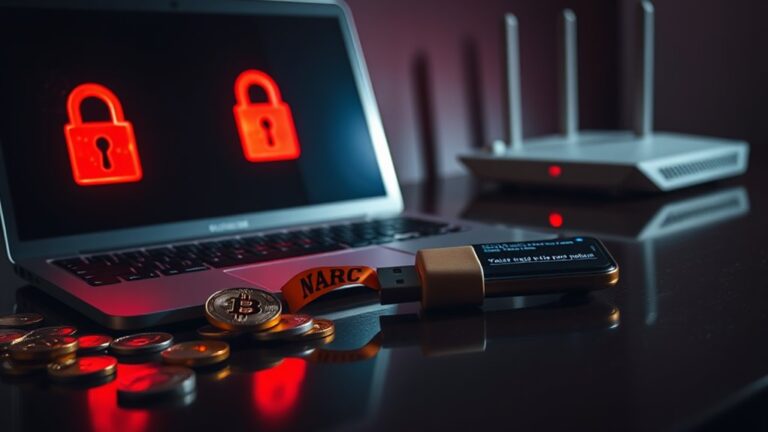
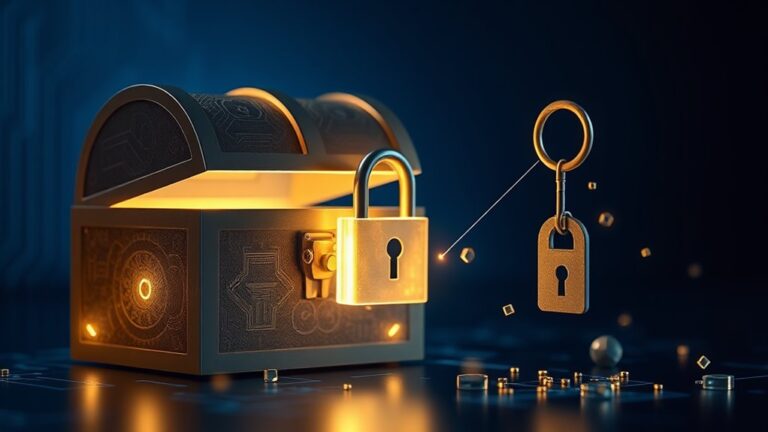

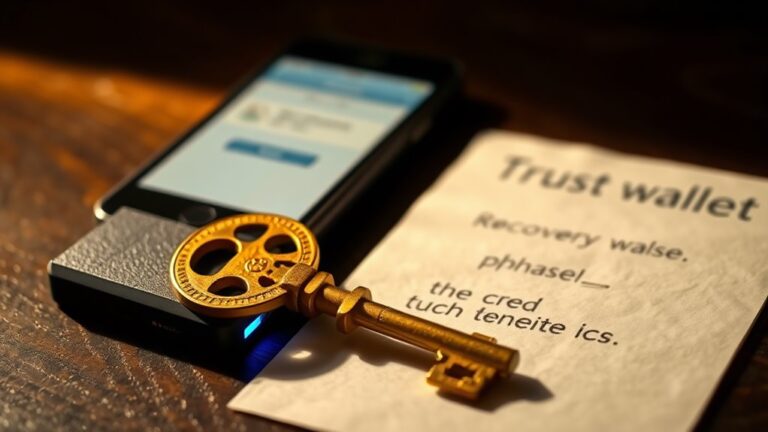
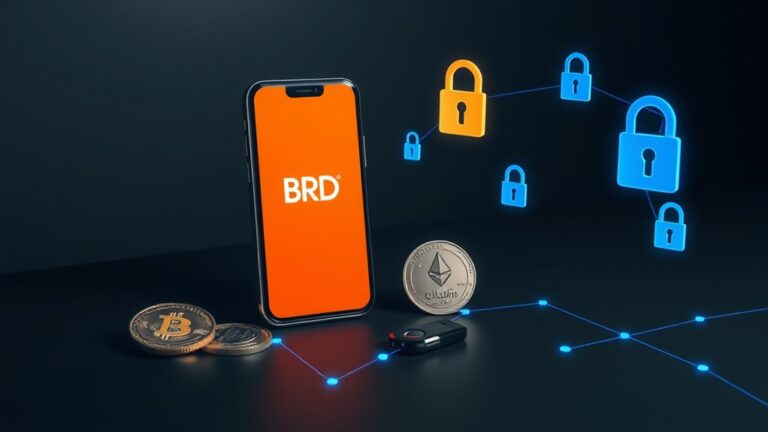
One Comment